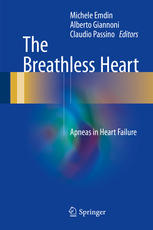The Breathless Heart: Apneas in Heart Failure 2016
دانلود کتاب پزشکی نفس نفس زدن: آپنه در نارسایی قلبی
| نویسنده |
Alberto Giannoni, Claudio Passino, Michele Emdin |
|---|
| تعداد صفحهها |
287 |
|---|---|
| نوع فایل |
|
| حجم |
8 Mb |
| سال انتشار |
2016 |
89,000 تومان
این کتاب به طور سیستماتیک بر آپنه خواب مرکزی تمرکز میکند و رابطه آن را بهویژه با نارسایی قلبی تجزیه و تحلیل میکند و یافتههای تحقیقات اخیر و استراتژیهای درمانی نوظهور را بر اساس نظرات اصلاحشده مورد بحث قرار میدهد. فصل های آغازین اطلاعات پیشینه تاریخی در مورد تنفس Cheyne-Stokes (CSR) را ارائه می دهند، اصطلاحات را روشن می کنند، و مکانیک و شیمی تنفس را توضیح می دهند. پس از تشریح فیزیولوژی تنفس، پاتوفیزیولوژی زمینه ای آپنه مرکزی در اختلالات مختلف و به ویژه در نارسایی قلبی مورد بحث قرار می گیرد. سپس شباهت ها و تفاوت های بین آپنه انسدادی و مرکزی در نظر گرفته می شود. این کتاب فراتر از مفهوم آپنه خواب به CSR در طول روز و تنفس دورهای در حین تلاش میپردازد و دیدگاههای مخالف CSR را بهعنوان یک پدیده جبرانکننده یا مضر برای نارسایی قلب در تضاد قرار میدهد. ابزارهای تشخیصی که در حال حاضر برای تشخیص CSR استفاده میشوند، با راهنمایی در مورد تفسیر نتایج بررسی میشوند. این کتاب با تشریح اشکال مختلف درمان موجود برای CSR و توضیح نحوه انتخاب درمان توسط بیماران به پایان می رسد.
This book systematically focuses on central sleep apneas, analyzing their relationship especially with heart failure and discussing recent research results and emerging treatment strategies based on feedback modulation. The opening chapters present historical background information on Cheyne-Stokes respiration (CSR), clarify terminology, and explain the mechanics and chemistry of respiration. Following a description of the physiology of respiration, the pathophysiology underlying central apneas in different disorders and particularly in heart failure is discussed. The similarities and differences of obstructive and central apneas are then considered. The book looks beyond the concept of sleep apnea to daytime CSR and periodic breathing during effort and contrasts the opposing views of CSR as a compensatory phenomenon or as detrimental to the failing heart. The diagnostic tools currently in use for the detection of CSR are thoroughly reviewed, with guidance on interpretation of findings. The book concludes by describing the various forms of treatment that are available for CSR and by explaining how to select patients for treatment.



